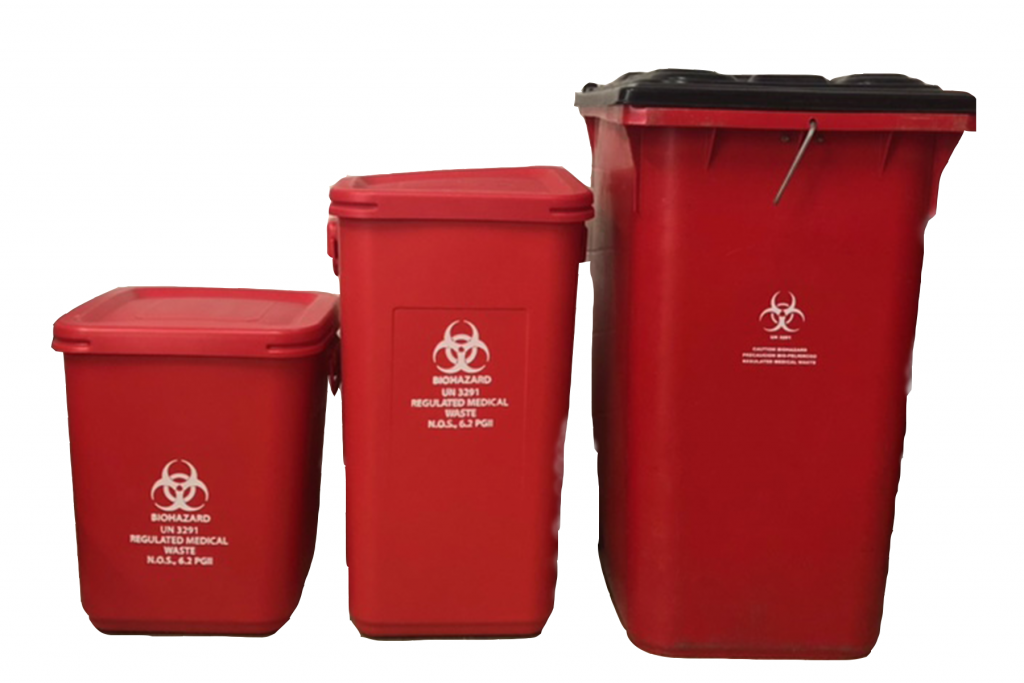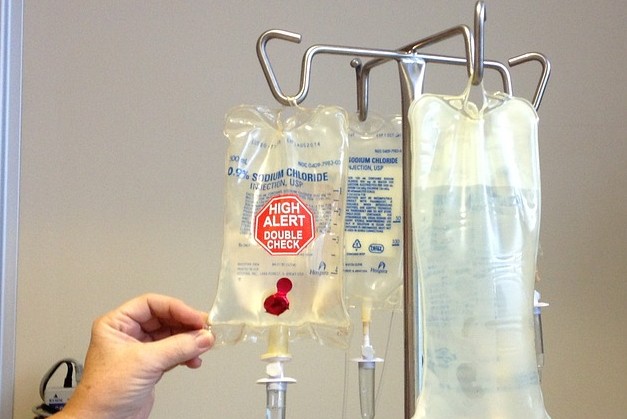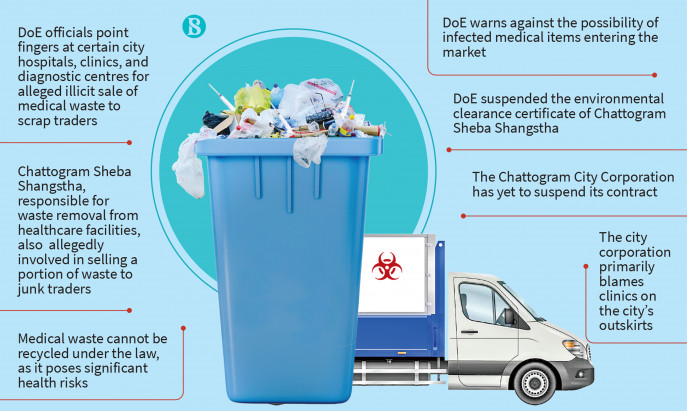Medical Waste Removal Excellence: Elevating Safety And Security Criteria in Your Center
Medical Waste Removal Excellence: Elevating Safety And Security Criteria in Your Center
Blog Article
Efficient and Ecologically Friendly Medical Garbage Disposal Solutions
In the ever-evolving field of healthcare, the problem of clinical garbage disposal continues to be a topic of paramount importance. As medical facilities, centers, and various other health care facilities aim to supply quality individual treatment, they must also attend to the obstacle of successfully and responsibly dealing with their waste - medical waste removal near me. In an era where ecological sustainability is at the leading edge of public consciousness, locating remedies that are both environmentally pleasant and reliable is not just a matter of conformity but likewise a testimony to the commitment of medical care organizations towards a greener future. From waste partition methods to innovative recycling efforts, this discussion will certainly check out the different strategies employed to tackle this pushing issue, leaving you captivated and excited to check out the prospective solutions that exist in advance.
Waste Segregation Practices
Reliable waste partition techniques are vital to make certain the appropriate and risk-free disposal of clinical waste. Clinical waste, that includes materials polluted with possibly contagious compounds, need to be taken care of in such a way that lessens the danger of harm to both public wellness and the setting. Correct waste segregation plays a vital duty in achieving this objective.
Waste segregation includes the splitting up of various sorts of waste based upon their qualities and prospective dangers. This process makes certain that each type of waste is treated and taken care of suitably (medical waste disposal services with WasteX). It starts at the factor of generation, where health care facilities ought to have assigned bins and containers for different waste groups, such as sharps, transmittable waste, pharmaceutical waste, and non-hazardous waste
By segregating medical waste at the source, healthcare service providers can protect against cross-contamination and decrease the risk of direct exposure to contagious representatives. This practice additionally facilitates the recycling and recovery of particular materials. Setting apart and recycling tidy plastics and glass reduces the demand for raw materials and reduces the environmental impact of clinical waste disposal.

Autoclaving and Sterilization Techniques
In order to guarantee the correct and secure disposal of medical waste following effective waste segregation practices, health care facilities must employ autoclaving and sterilization methods. Autoclaving is a commonly used approach that utilizes high-pressure heavy steam to decontaminate medical waste. This procedure entails positioning the waste in a chamber and subjecting it to a mix of heat and stress, which properly kills microorganisms and provides the waste safe for disposal. Autoclaving is particularly effective in sterilizing things such as surgical instruments, research laboratory equipment, and certain kinds of clinical waste that can stand up to heats. medical waste disposal services with WasteX.
Another commonly made use of sanitation strategy is chemical sanitation. This includes dealing with the waste with chemicals such as ethylene oxide or hydrogen peroxide, which kill bacteria by interrupting their mobile structure. Chemical sterilization is commonly used for heat-sensitive products or materials that can not hold up against the heats of autoclaving. It is vital to keep in mind that chemical sanitation needs appropriate handling and disposal of the chemicals used, as they can be harmful to human health and the atmosphere if not managed appropriately.
On-Site Waste Therapy Systems
Healthcare facilities have carried out on-site waste treatment systems to attend to the disposal of clinical waste in a safe and reliable fashion. These systems give a cost-effective and convenient option for taking care of clinical waste created within the center. On-site waste treatment systems utilize different modern technologies to deal with and dispose of clinical waste on-site, reducing the requirement for transport to off-site centers.
One commonly used on-site waste therapy system is the microwave modern technology. One more system is the chemical sanitation modern technology, which includes dealing with medical waste with chemicals to eliminate virus and lower its dangerous nature. medical waste disposal services with WasteX.
They get rid of the threat of clinical waste being mishandled throughout transportation, reducing the capacity for contamination and exposure to unsafe substances. On-site therapy systems reduce the total ecological impact of clinical waste by lessening transport and the demand for land fill space.
Recycling and Repurposing Efforts
As healthcare facilities pursue sustainable waste management methods, they are progressively discovering recycling and medical waste disposal services with WasteX repurposing campaigns as a method of lowering the ecological effect of medical waste. Recycling and repurposing initiatives involve discovering innovative methods to reuse or transform medical waste into new products or products. This not only assists to lessen the volume of waste that ends up in land fills or burners but additionally minimizes the usage of basic materials and energy needed for manufacturing brand-new products.
One instance of recycling in the health care sector is the reprocessing of single-use clinical devices. This not only lowers the amount of waste created but additionally saves medical care facilities considerable prices associated with buying brand-new gadgets.
An additional recycling effort entails the recycling of plastic containers, such as medication bottles or syringe cases. These containers can be collected, sorted, and sent out to reusing facilities where they are processed, thawed down, and changed into new plastic items. This helps to save sources and reduce the need for virgin plastic manufacturing.
Along with recycling, repurposing efforts entail locating alternative uses for medical waste. For instance, shredded paper waste from clinical records or Recommended Site packaging materials can be repurposed as bed linen material for animals or as insulation material (medical waste removal service). Likewise, organic waste such as food scraps from health care facilities can be composted and utilized as fertilizer in gardens or agricultural fields.

Renewable Energy Solutions
One reliable strategy to minimizing the ecological influence of healthcare procedures involves executing renewable resource services. Health care facilities, such as facilities and health centers, eat considerable amounts of power for various functions, including lighting, heating, air conditioning, and operating clinical tools. By transitioning to renewable energy sources, these centers can substantially decrease their carbon impact and add to a more lasting future.

Applying renewable resource solutions in healthcare centers not just reduces greenhouse gas emissions however additionally provides long-lasting expense financial savings. While the initial investment in sustainable power infrastructure may be higher, the long-lasting functional expenses of eco-friendly power systems are significantly lower compared to standard fossil fuel-based power resources. In addition, eco-friendly power systems are reputable and can offer a stable and continuous power supply, making sure constant health care solutions also throughout power blackouts or emergency situations.
Verdict
Finally, applying eco pleasant and effective clinical garbage disposal remedies is essential for keeping a lasting medical care system. By embracing waste segregation practices, autoclaving and sanitation techniques, on-site waste treatment systems, try here recycling and repurposing campaigns, and renewable resource services, healthcare centers can significantly reduce their environmental influence. These actions not only safeguard the setting yet also advertise public health and wellness and safety and security. For that reason, it is essential for healthcare companies to focus on the execution of these lasting waste disposal techniques.
It starts at the factor of generation, where healthcare facilities must have assigned containers and containers for various waste classifications, such as sharps, transmittable waste, pharmaceutical waste, and non-hazardous waste.
In order to make certain the appropriate and safe disposal of medical waste following effective waste partition techniques, medical care facilities need to utilize autoclaving and sanitation strategies.Health care centers have executed on-site waste treatment systems to attend to the disposal of clinical waste in a safe and effective manner. On-site waste therapy systems make use of different modern technologies to deal with and get rid of of clinical waste on-site, lessening the demand for transport to off-site facilities.
As medical care centers aim for sustainable waste administration methods, they are increasingly exploring recycling and repurposing campaigns as a means of reducing the environmental influence of clinical waste. - medical waste removal services
Report this page